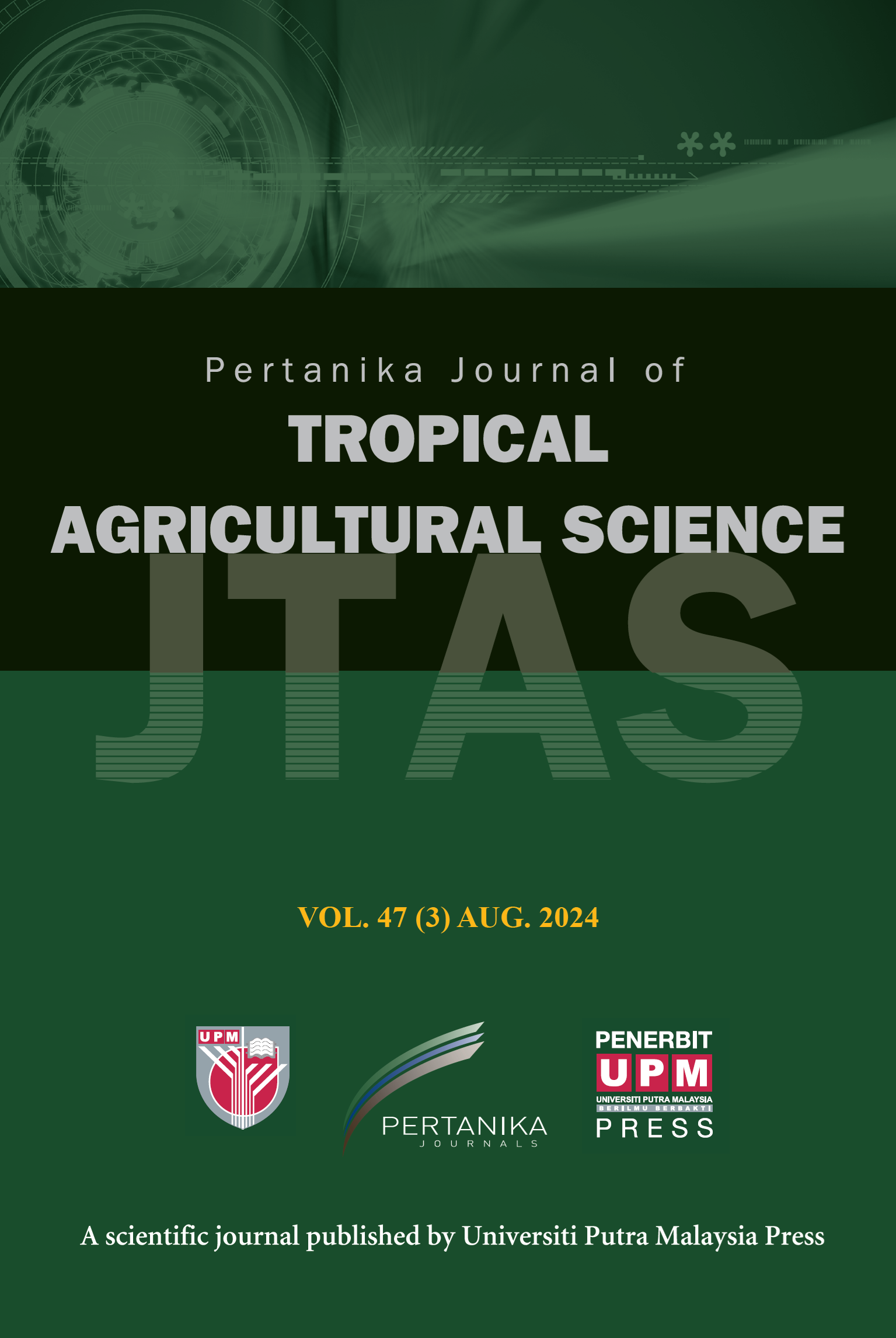PERTANIKA JOURNAL OF TROPICAL AGRICULTURAL SCIENCE
e-ISSN 2231-8542
ISSN 1511-3701
Elemental Concentration in Three Different Fish Species Captured from Oluwa River, Okitipupa, Ondo State, Nigeria
Thompson Faraday Ediagbonya and Ramond Babatunde Adesokan
Pertanika Journal of Tropical Agricultural Science, Volume 27, Issue 4, October 2019
Keywords: Element, hazard index, target hazard quotient, X-Ray fluorescence
Published on: 21 October 2019
There has been a rapid turnaround from meat consumption to fish consumption in Nigeria over the last few years. As at 2013, the rate of fish consumption in Nigeria has risen to 2.6 million tonnes with a per capita consumption of 13.5 kg. Heavy metals bio-accumulate in fishes especially when the water body is polluted. Hence, humans are at risk of being affected by these metals via the consumption of contaminated fish, fish products and other aquatic foods captured from a contaminated river for this reason, there is need to monitor the level of heavy metal concentration in water bodies where they are caught. Analyses were done on fourteen (14) elements (Fe, Ni, Cr ,Cu , Mn, As, Zn,Ca, Ti, Se,Rb,K, Sr, Co) in three different fish species were analysed using Energy Dispersive X-ray florescence (EDXRF). The result showed that the mean values of Cr, Mn, Fe, Ni, Cu, Zn and As were all Higher than the recommended FAO/WHO standards. Generally, metal concentration in the gills is higher than that of the muscles for each species except Zn, Se and Fe in which is higher in the muscle for Tilapia fish and Fe, K and Rb which is higher in the muscle for Catfish. The target hazard quotient (THQ) of each metal through consumption of fishes from Oluwa river for both adults and children increased in the following order: Fe < Ni < Cr < Cu < Mn < As.
ISSN 1511-3701
e-ISSN 2231-8542




